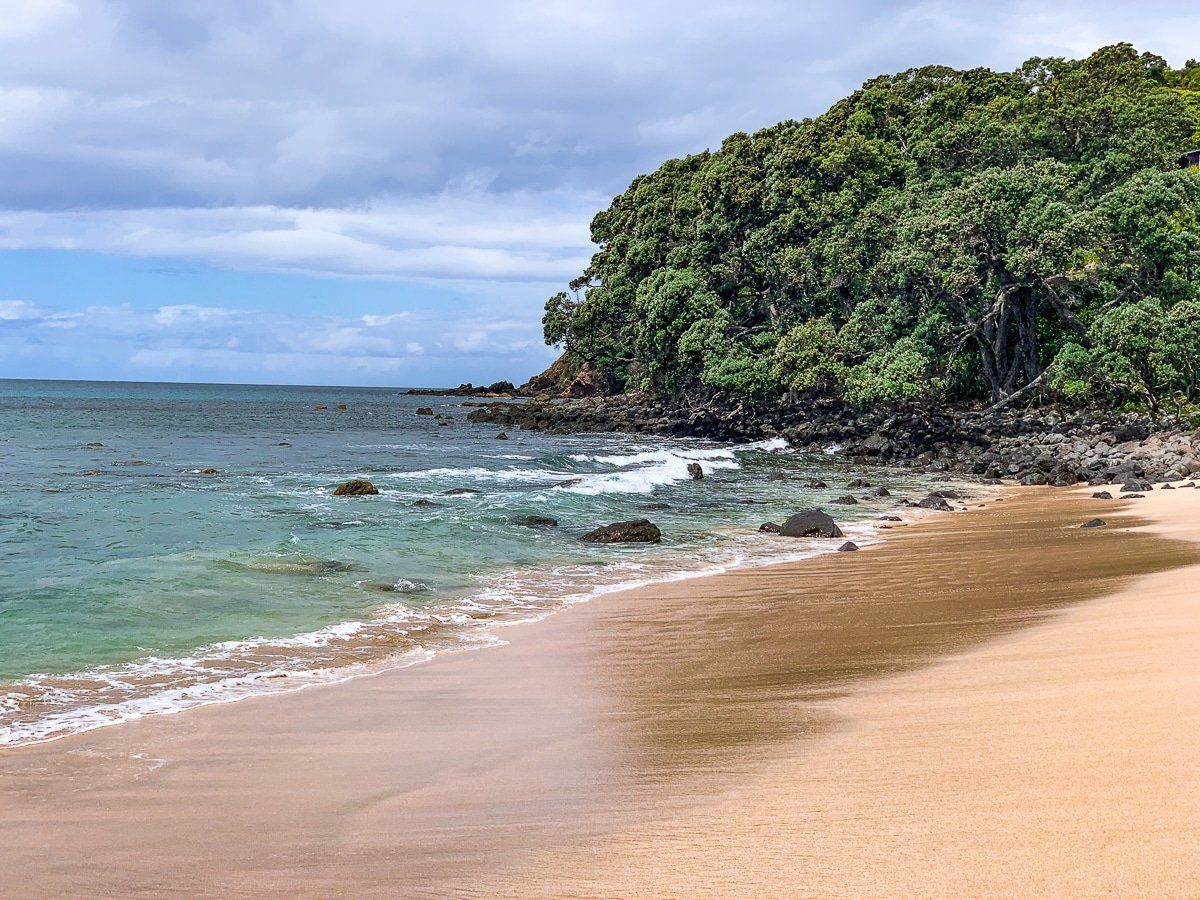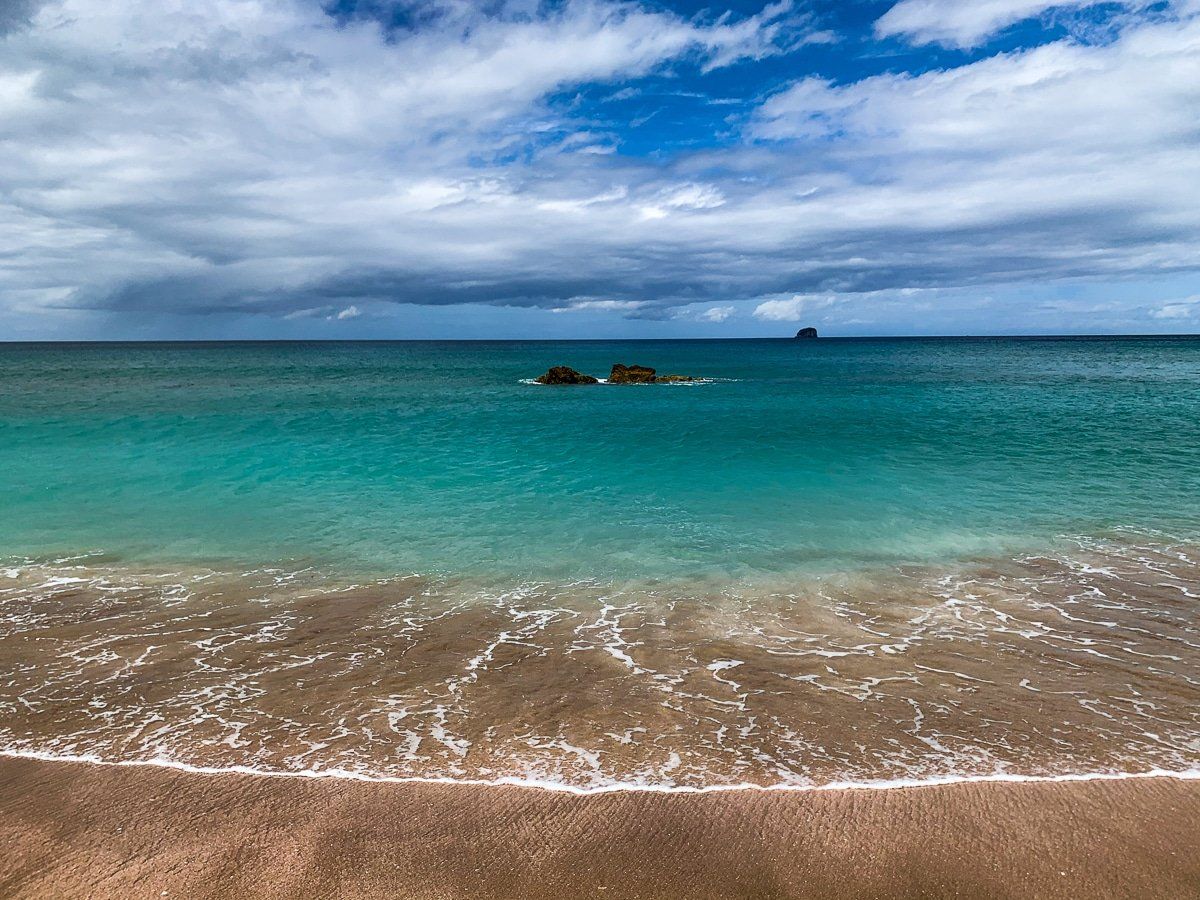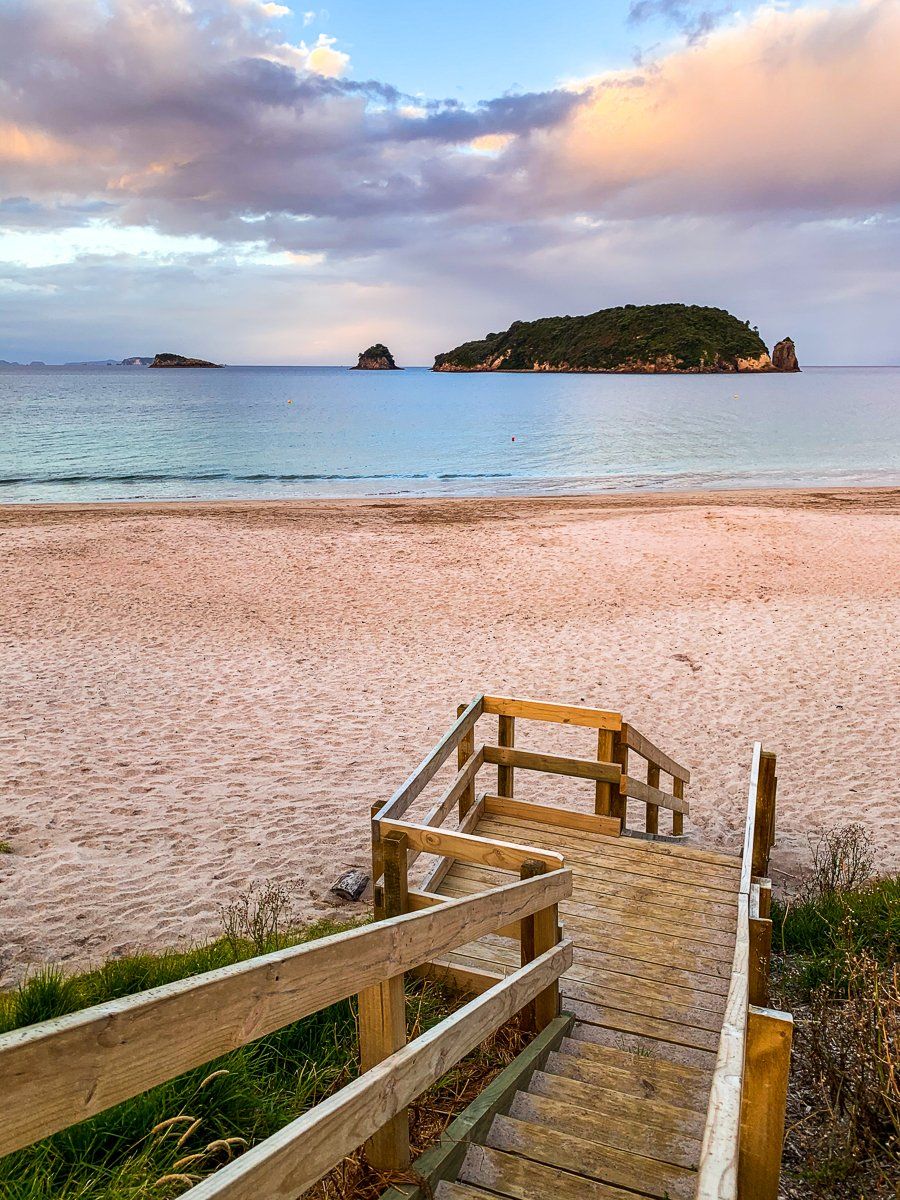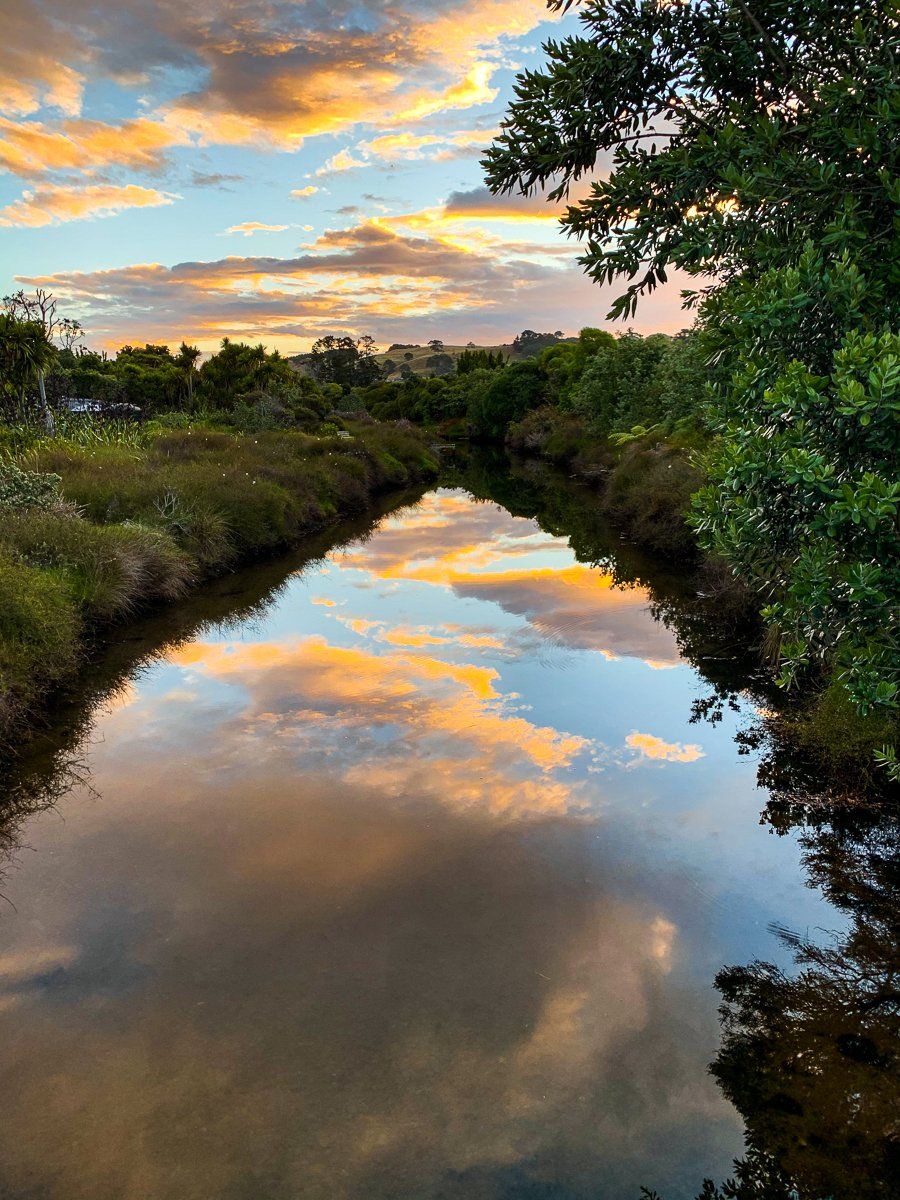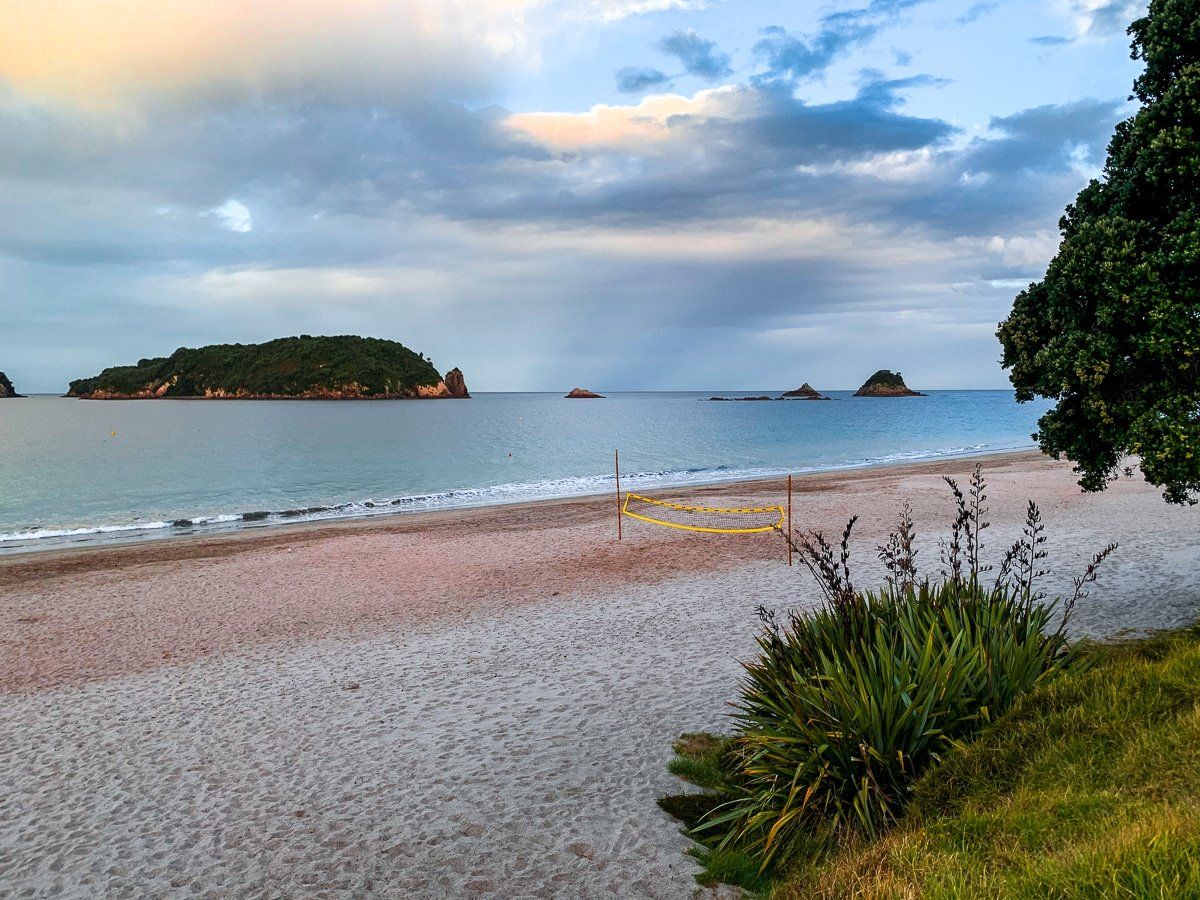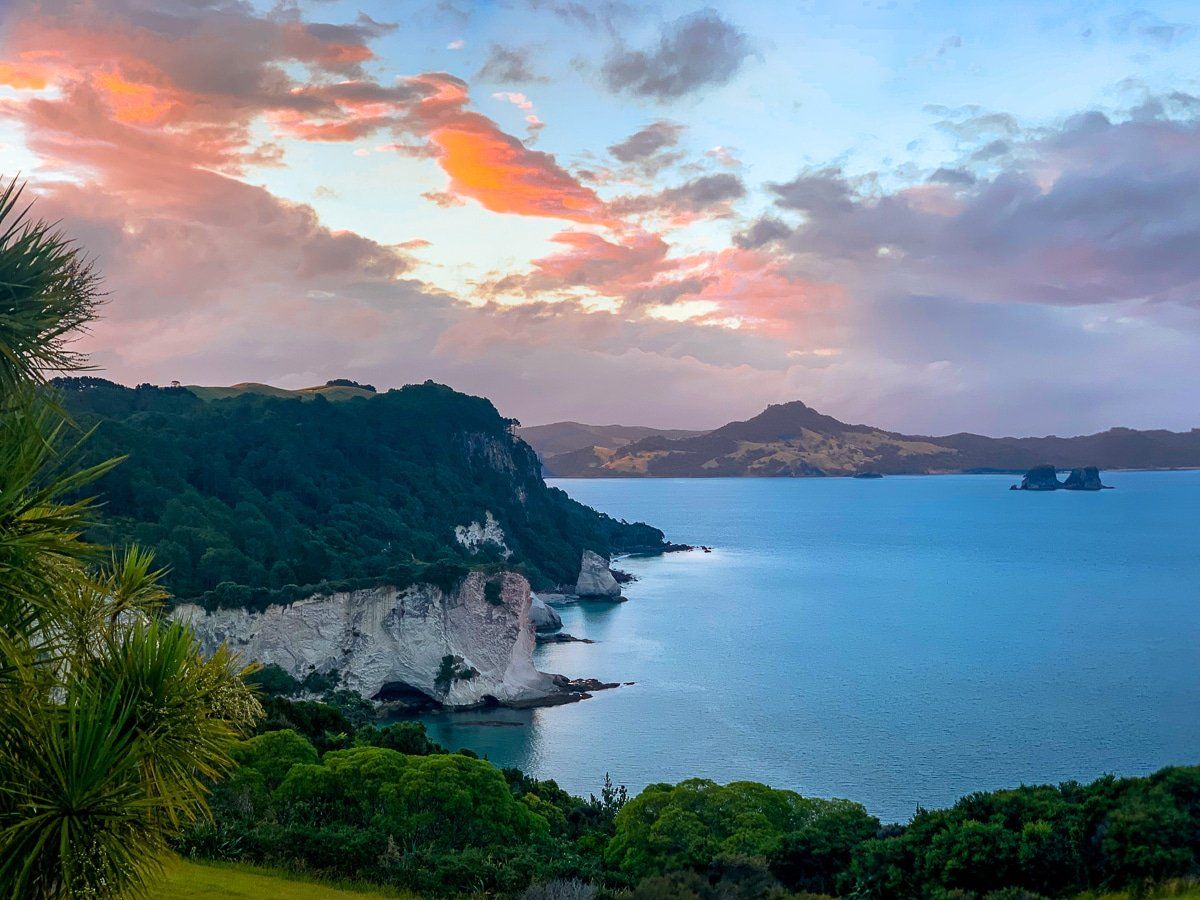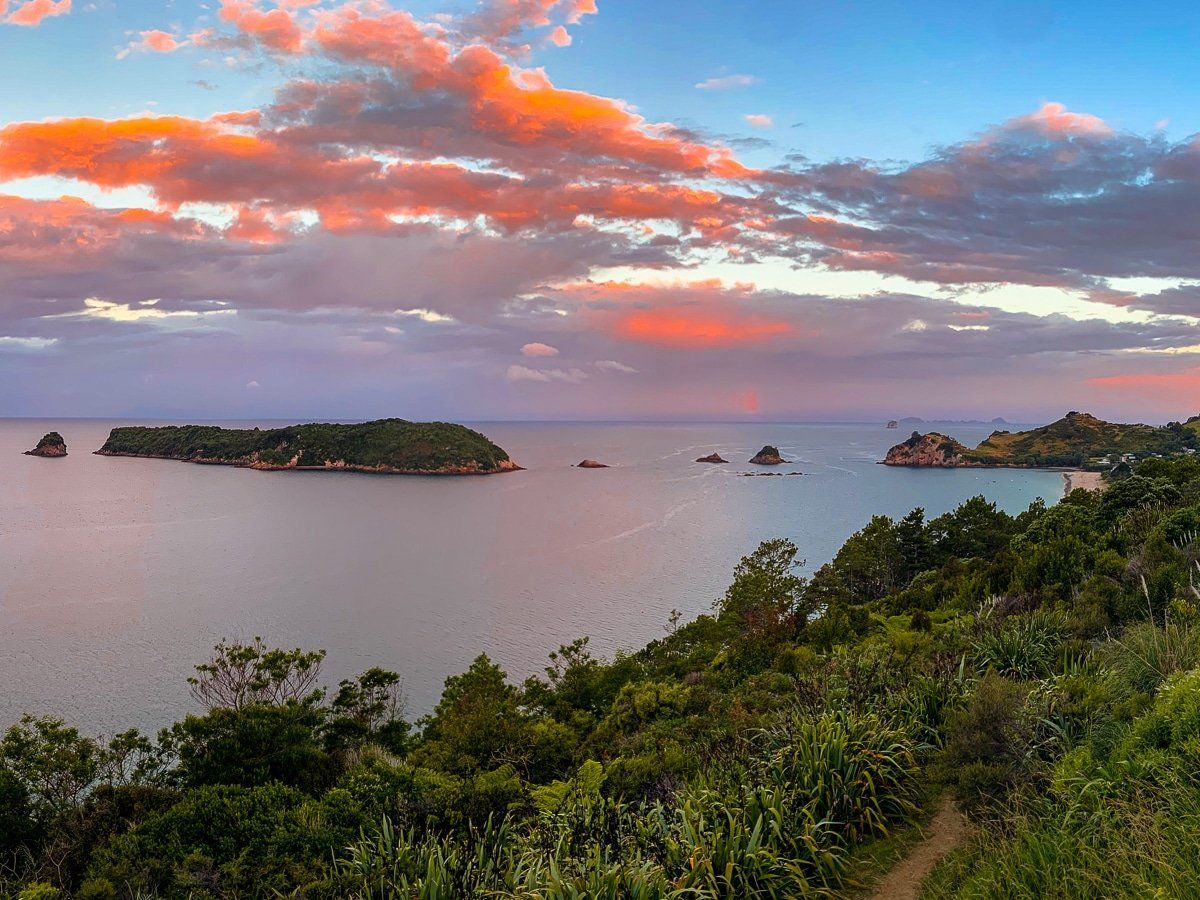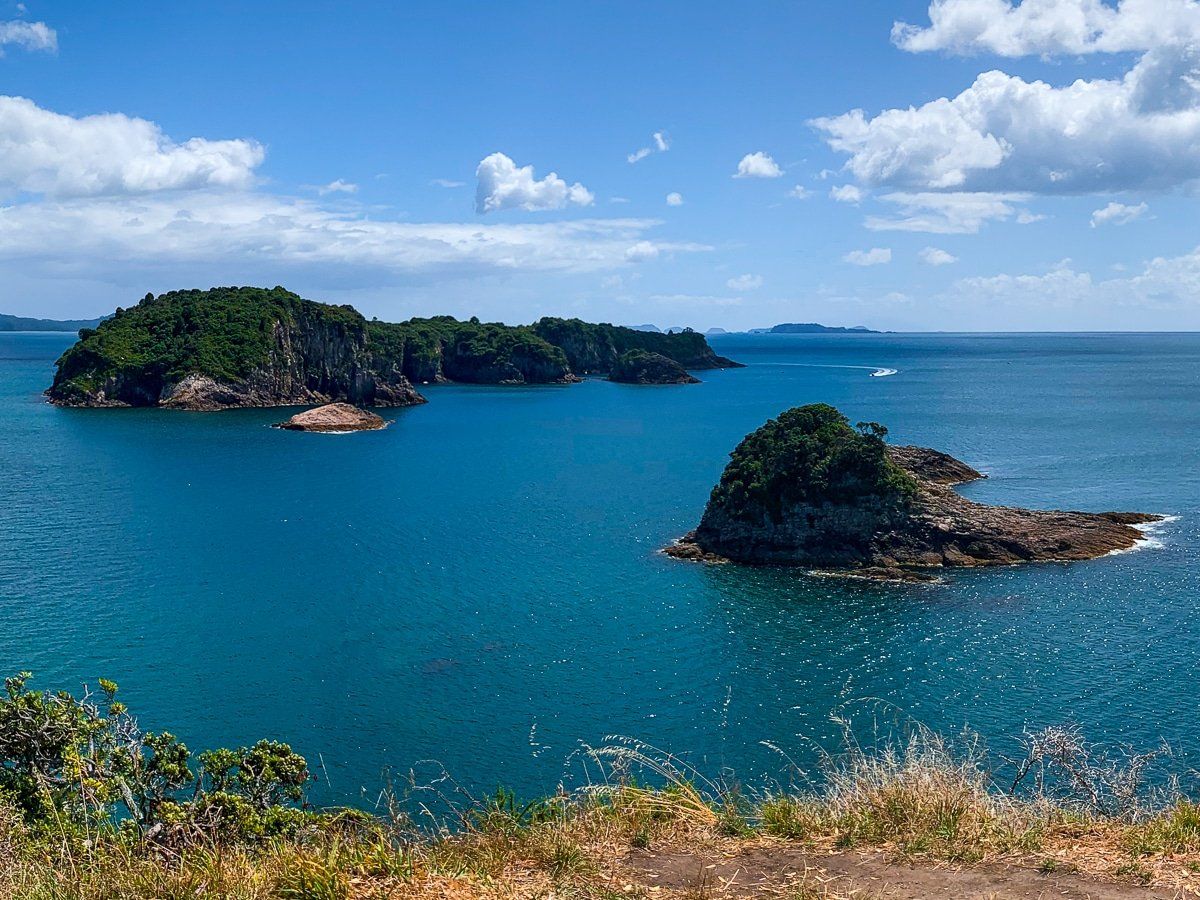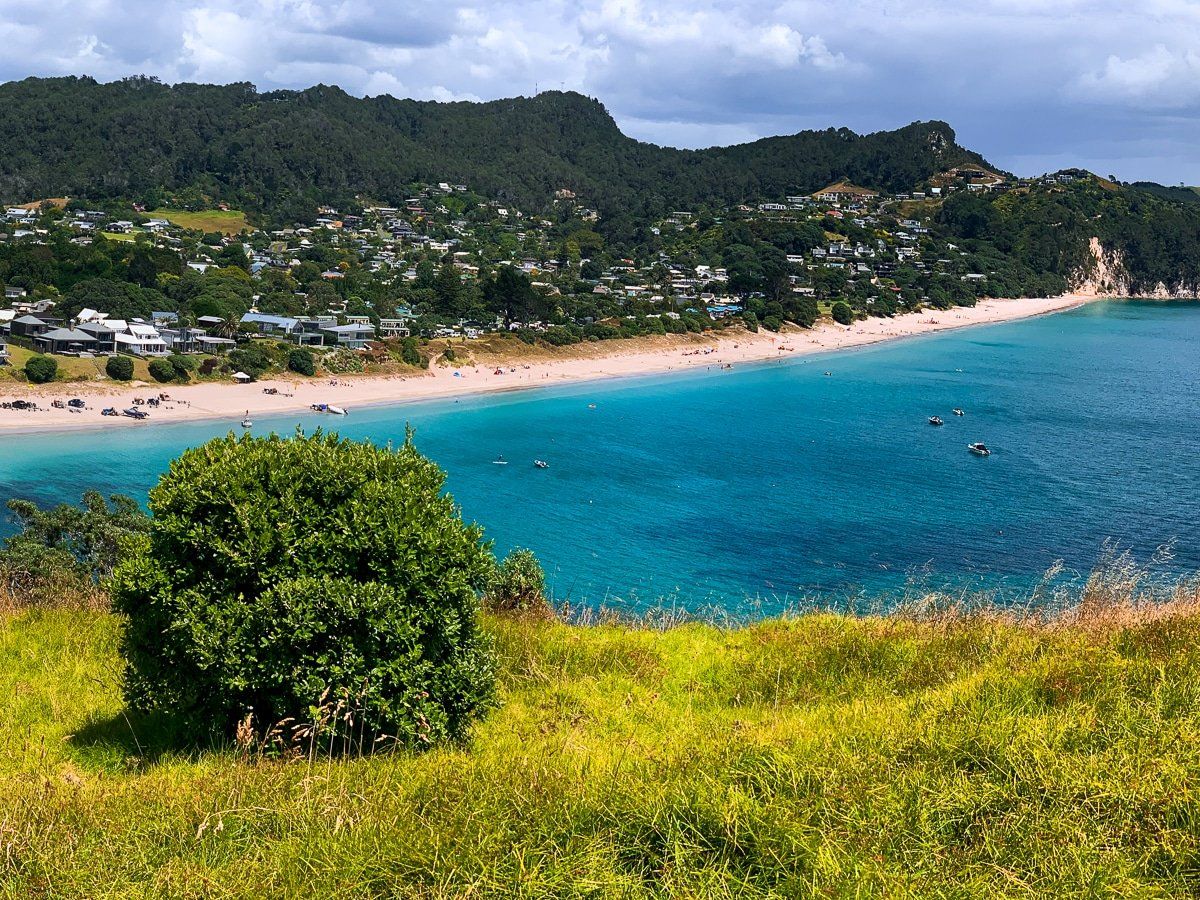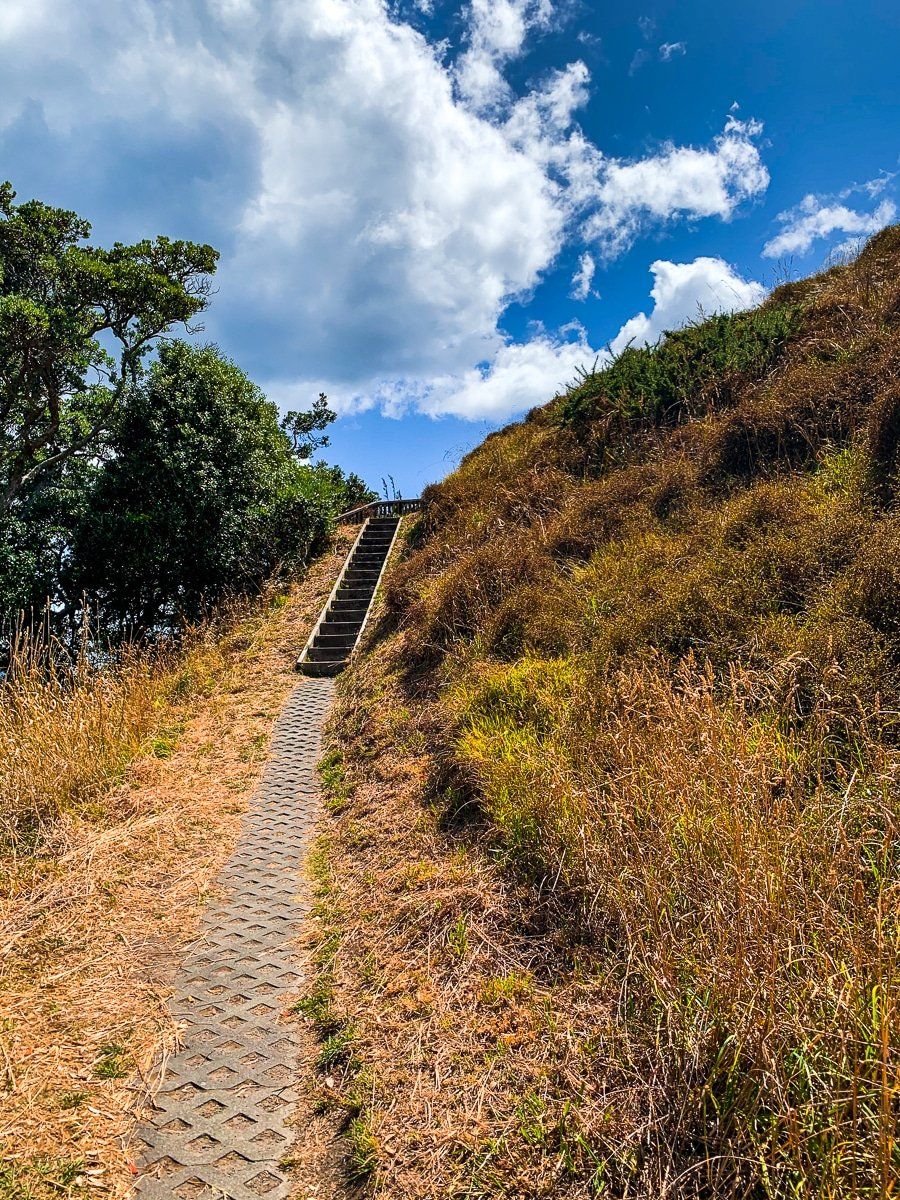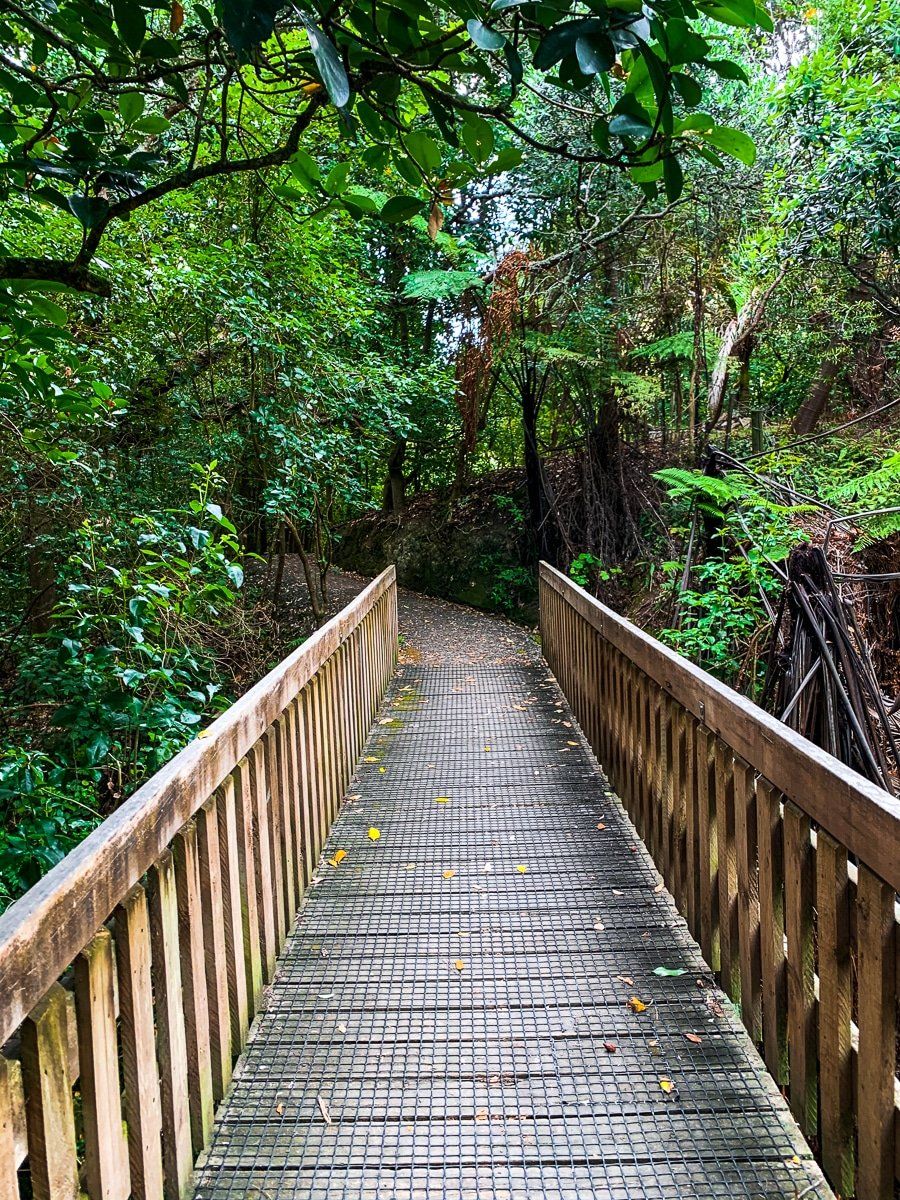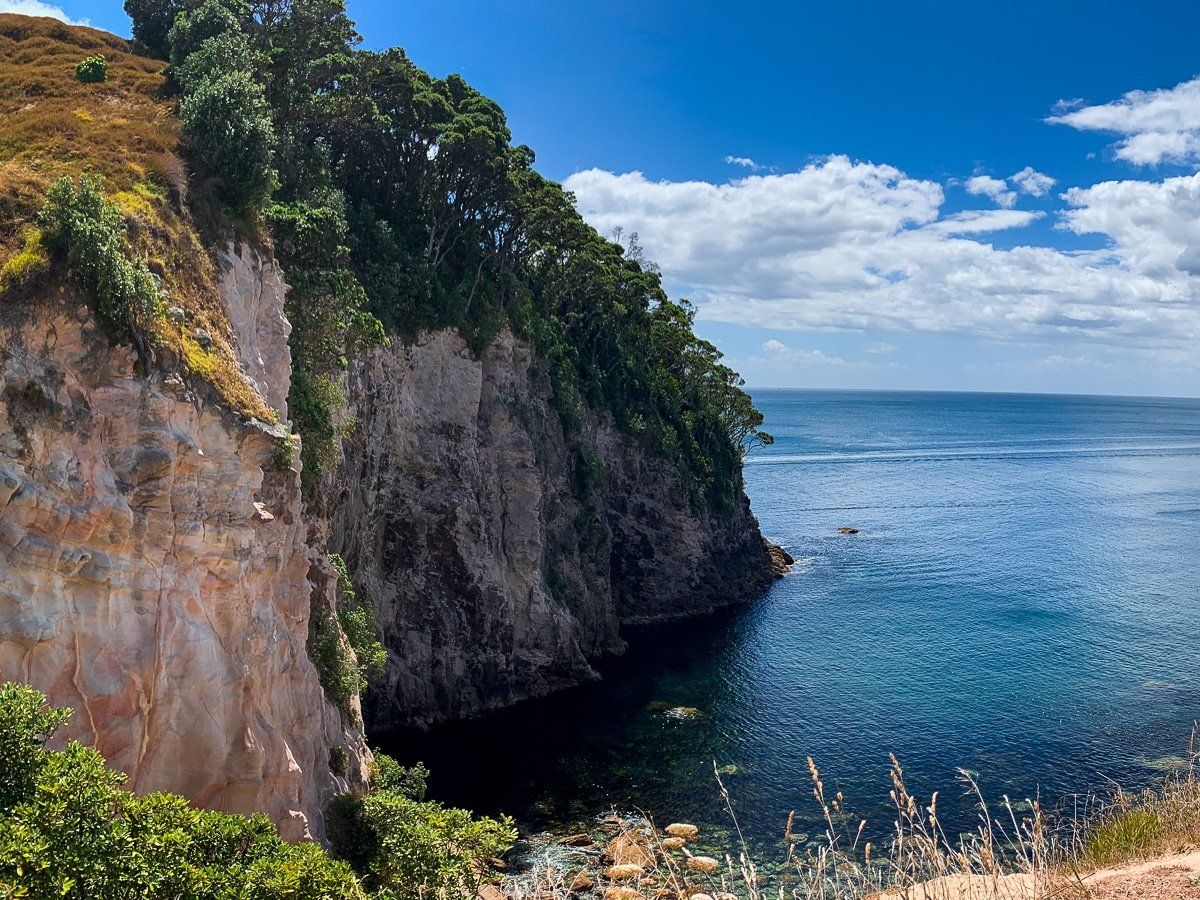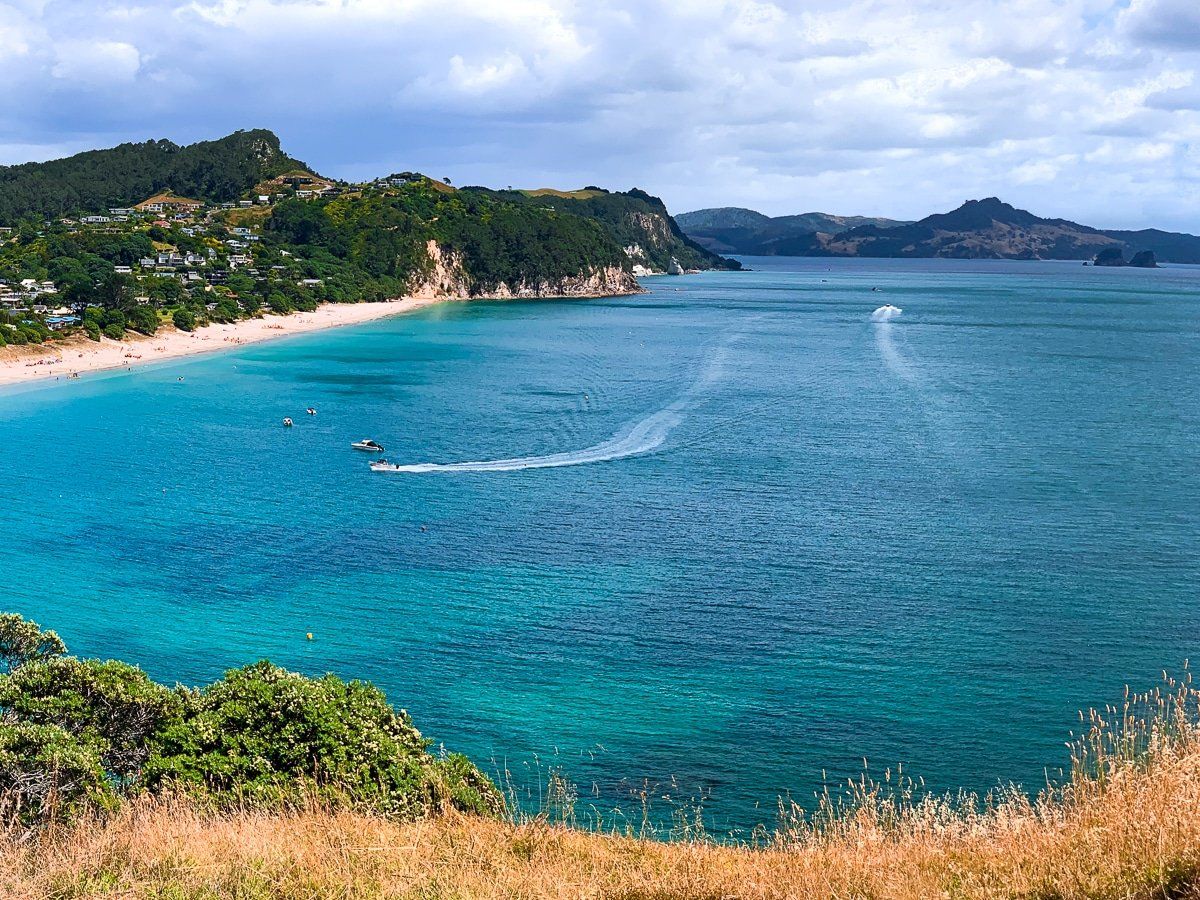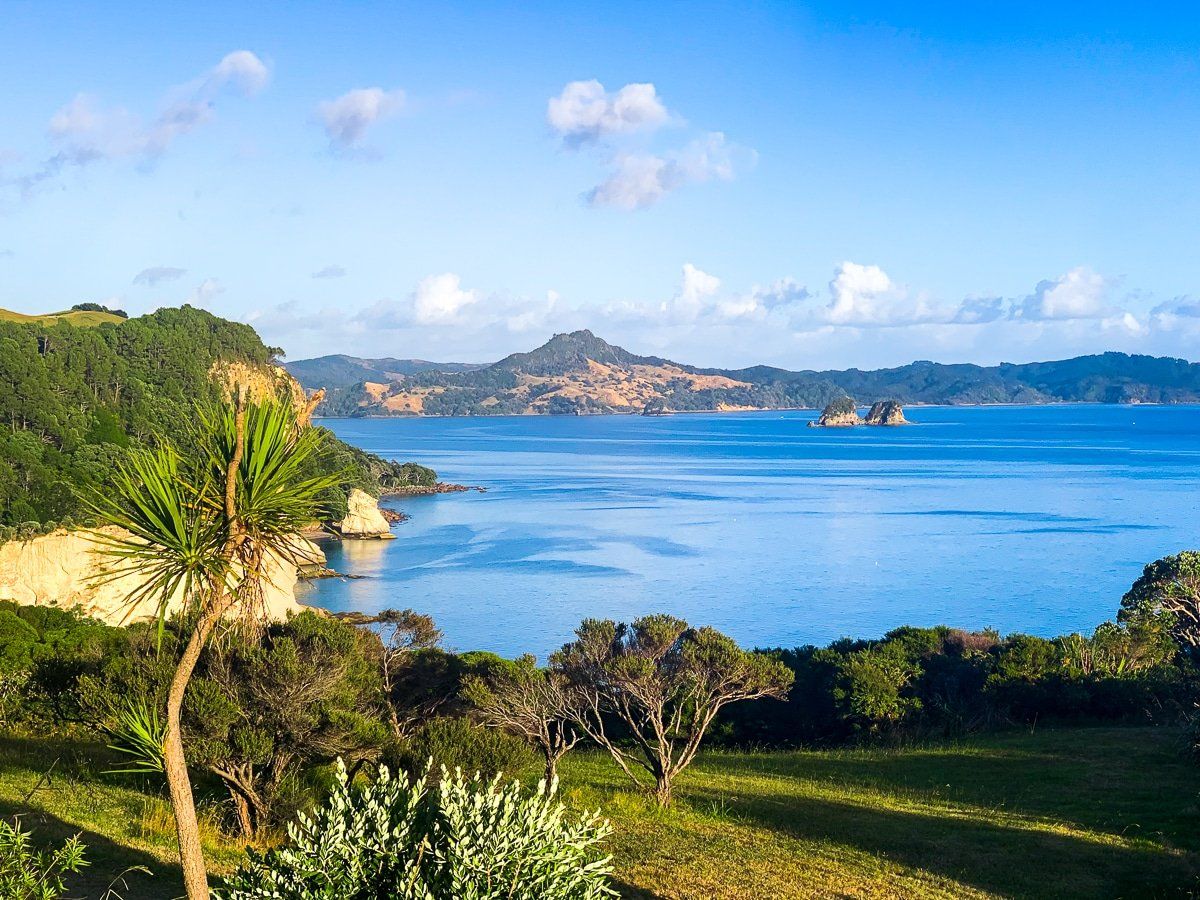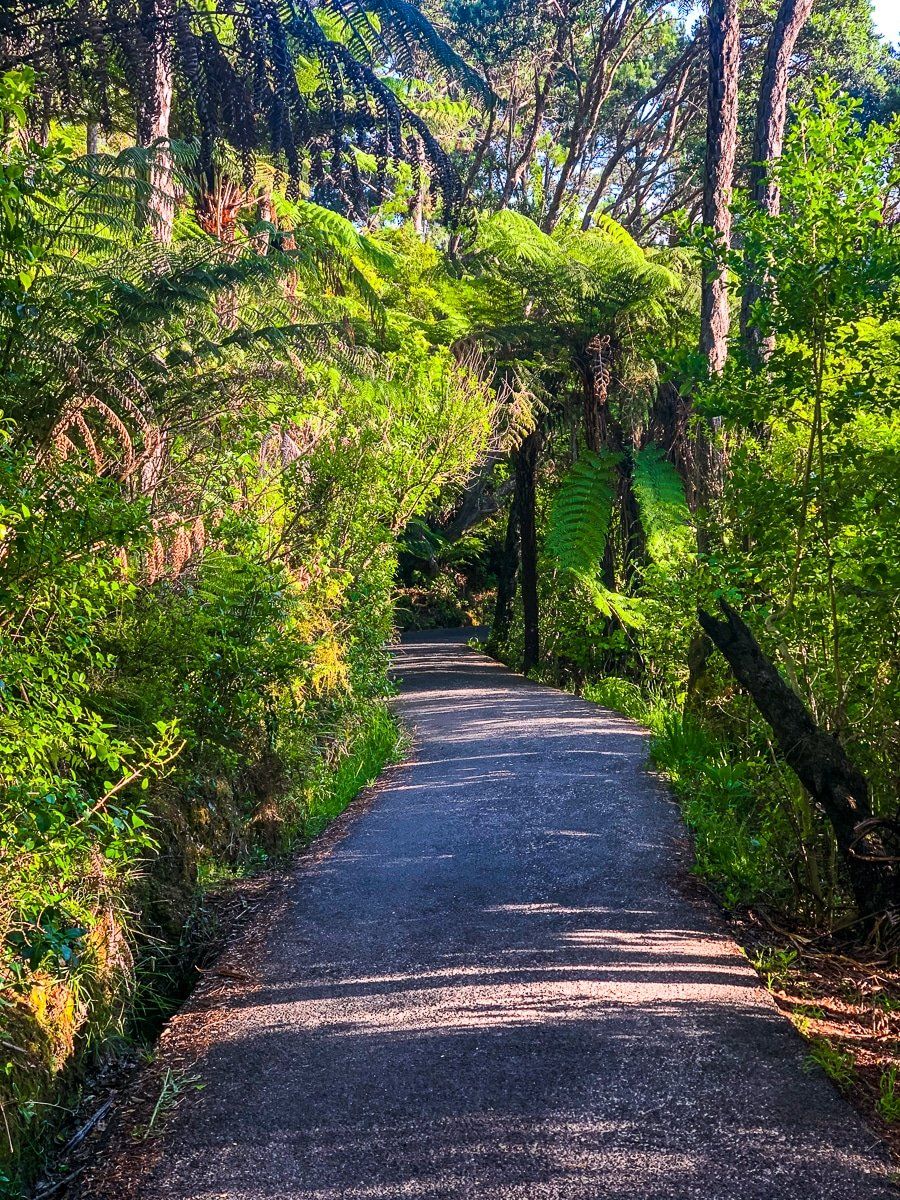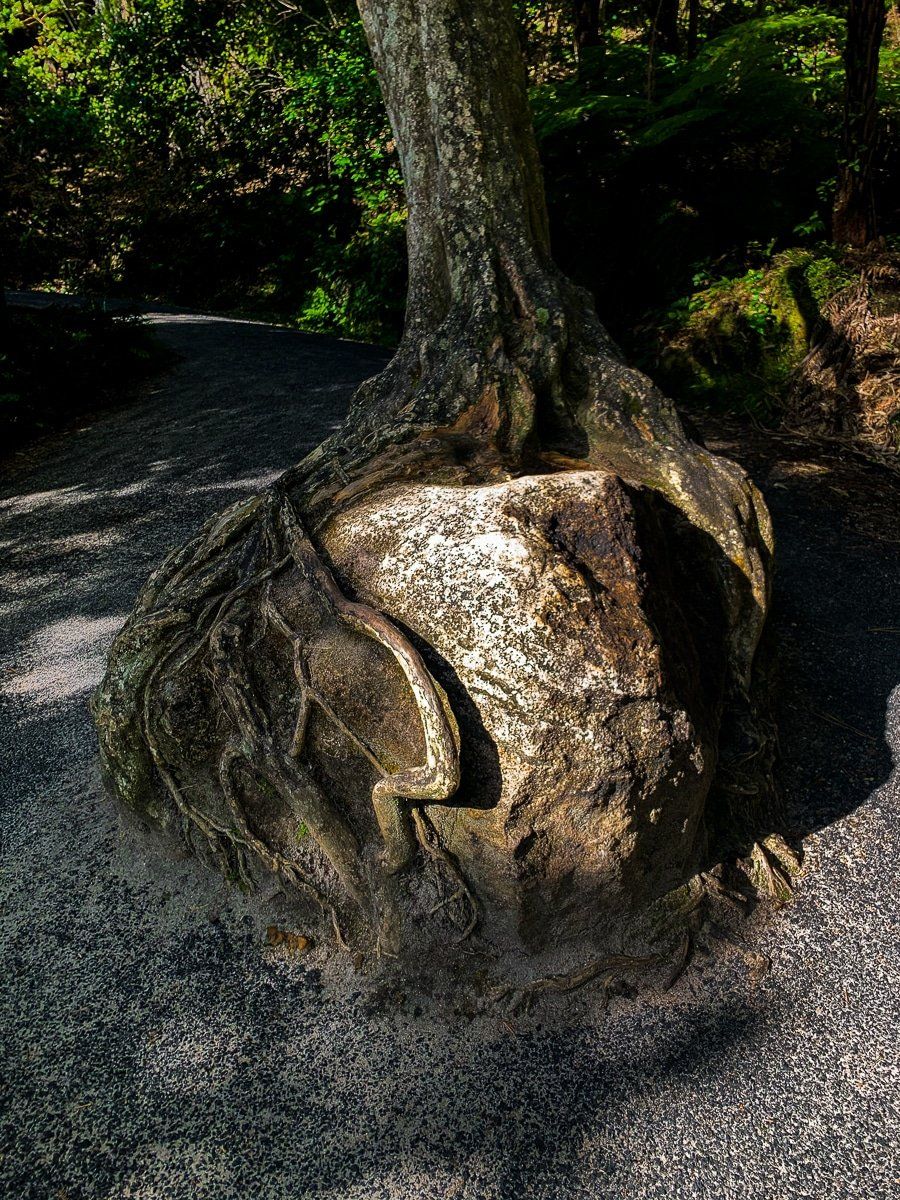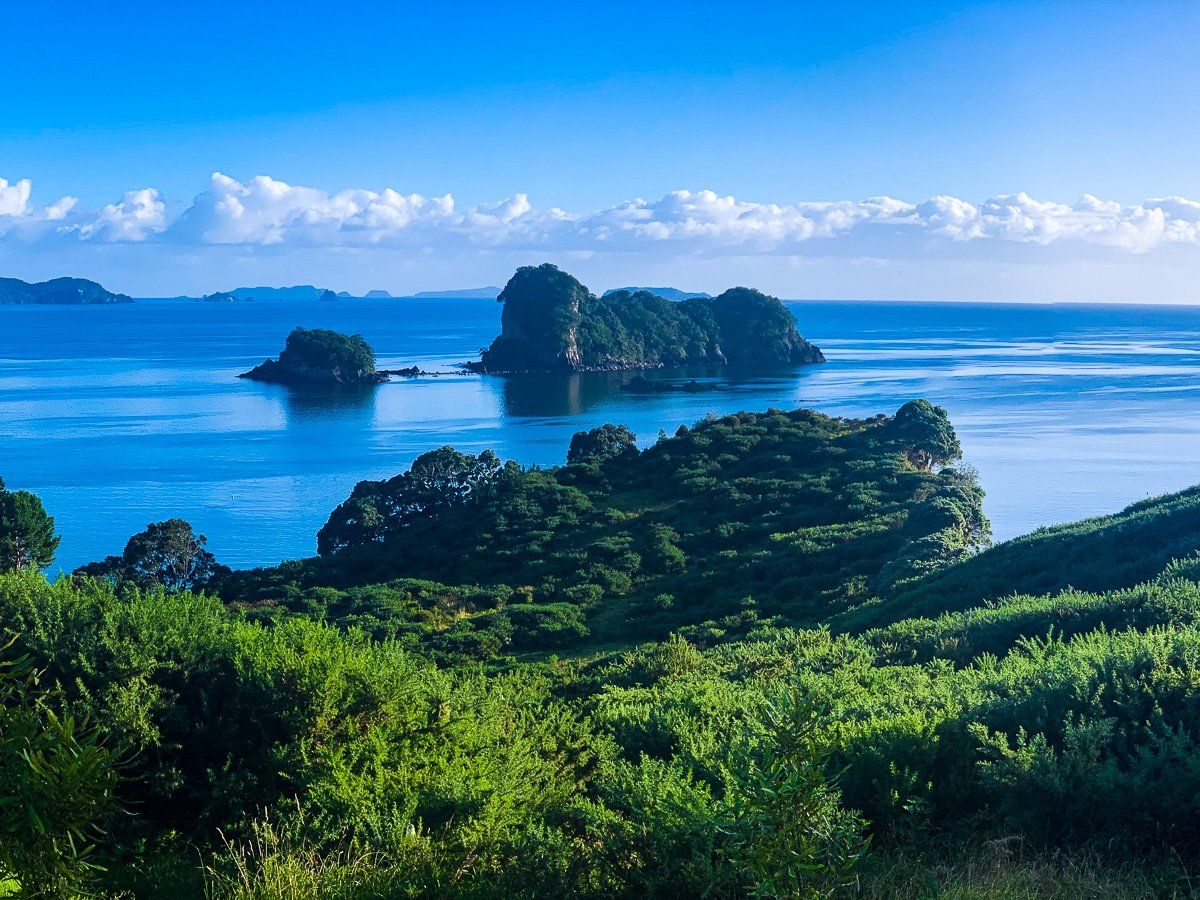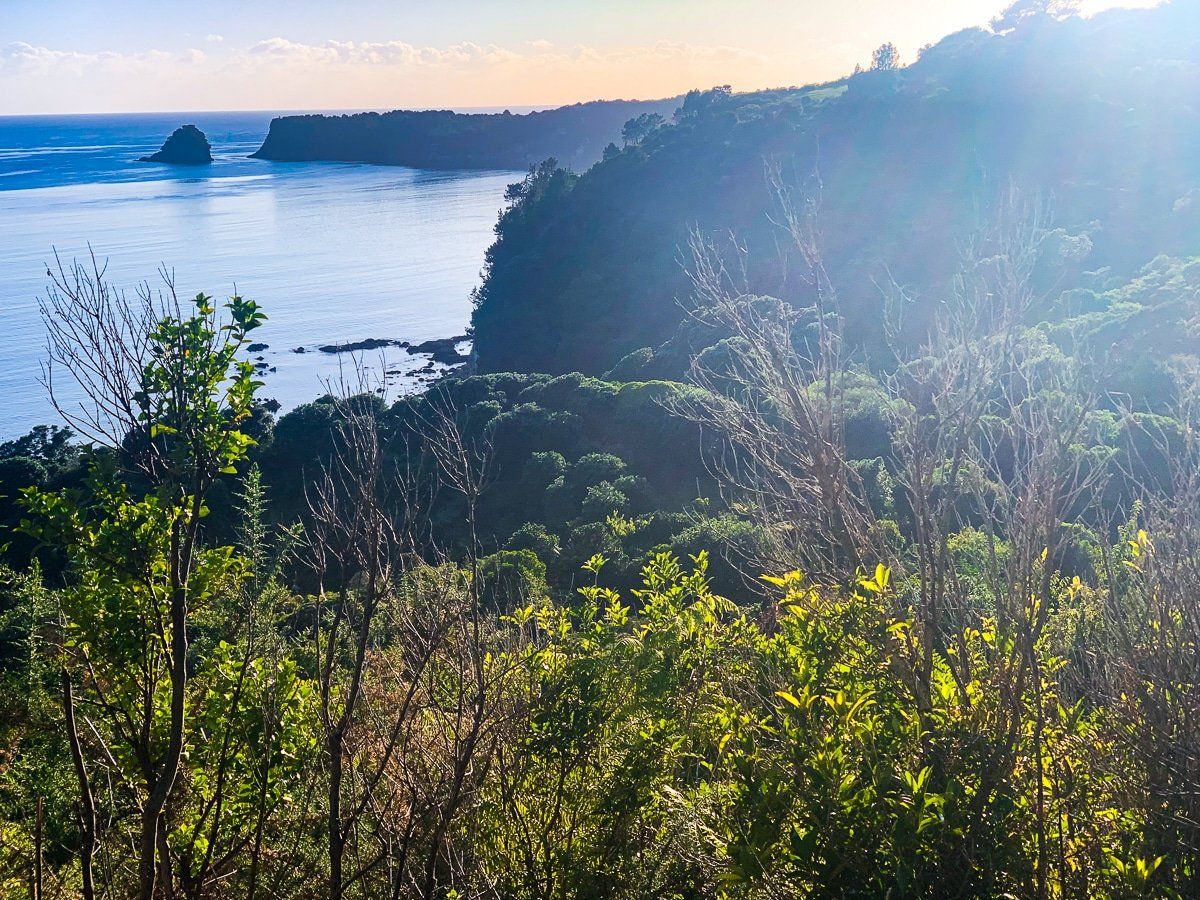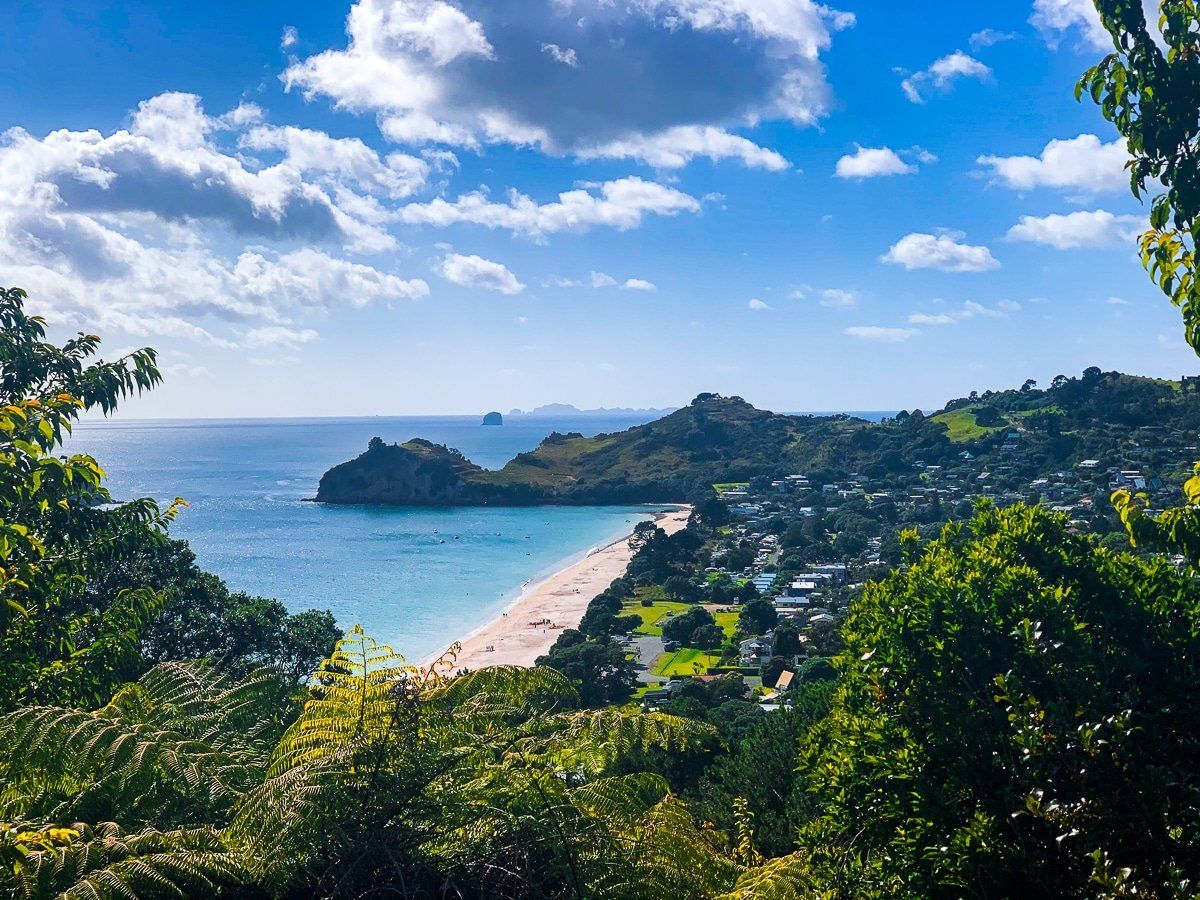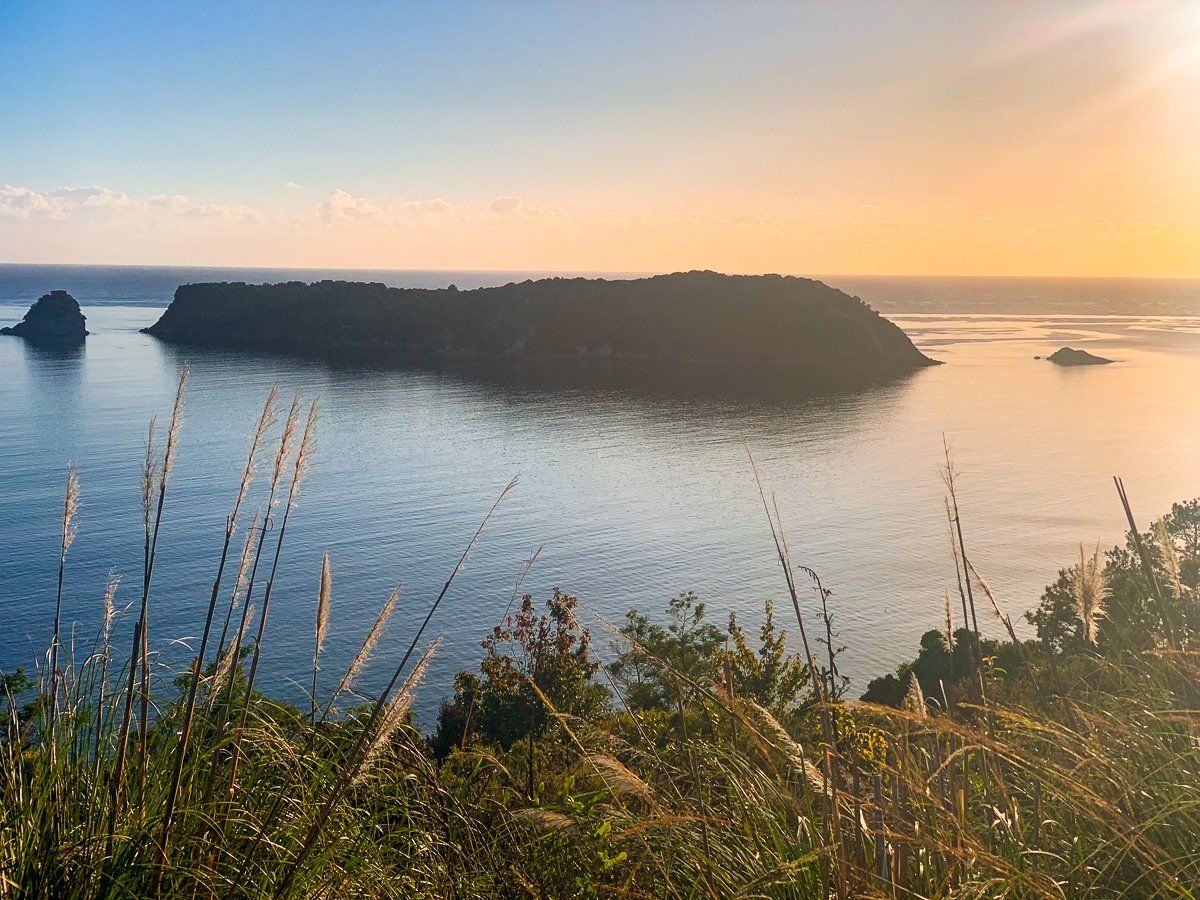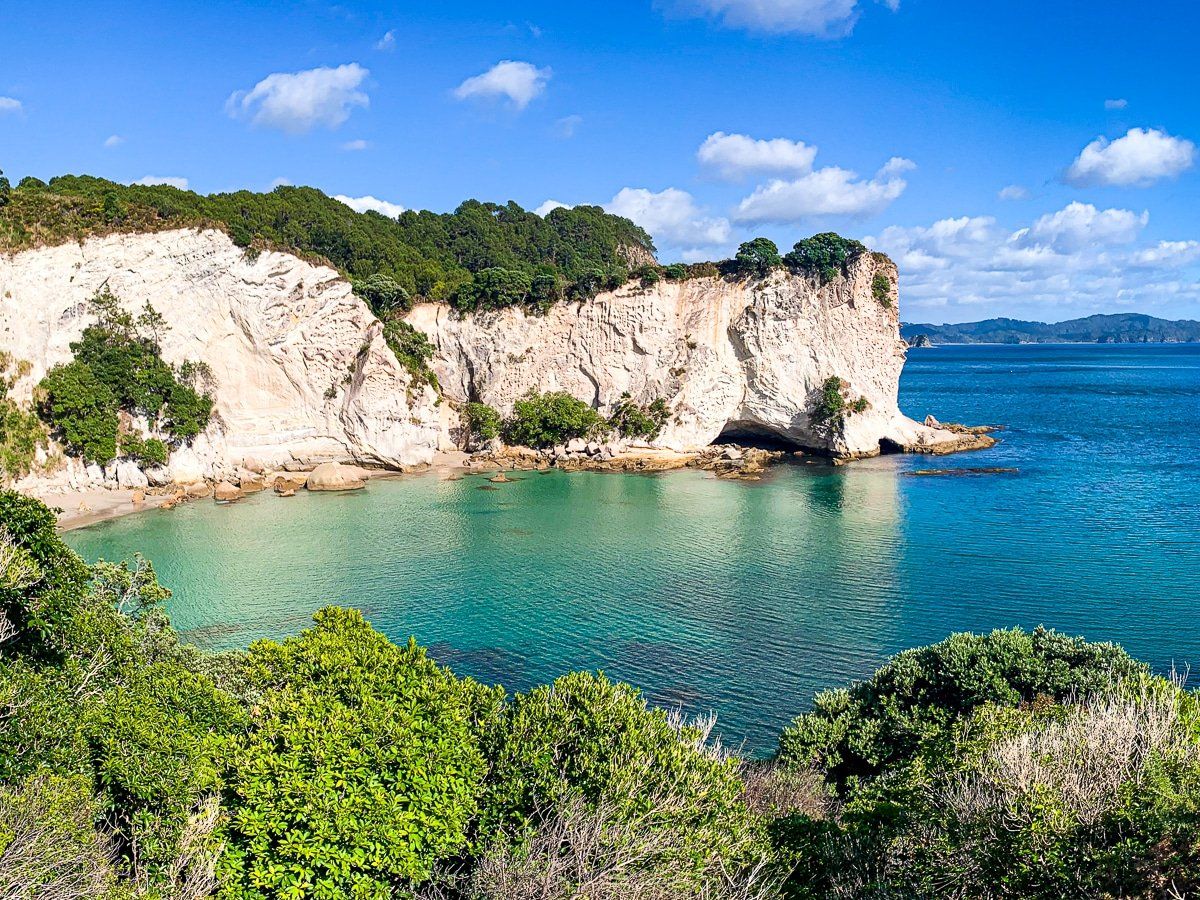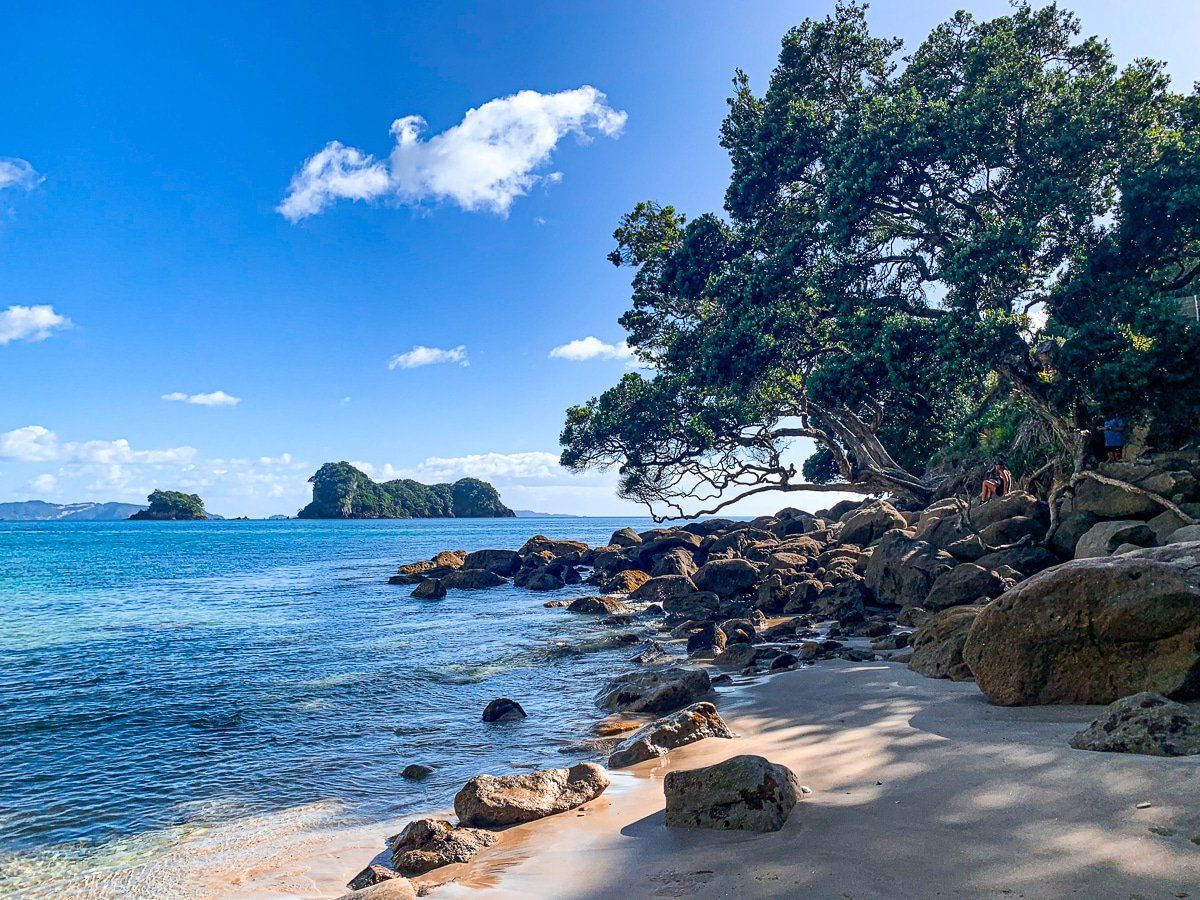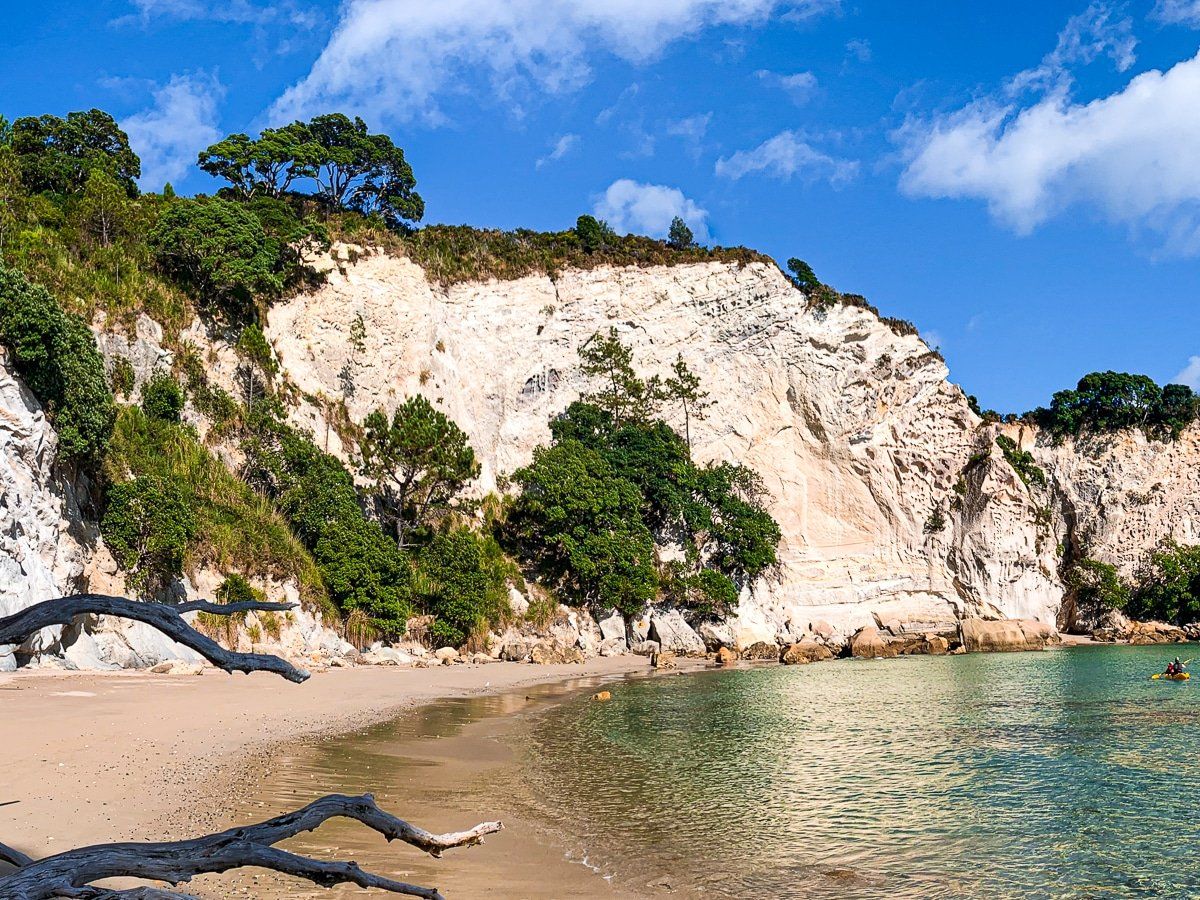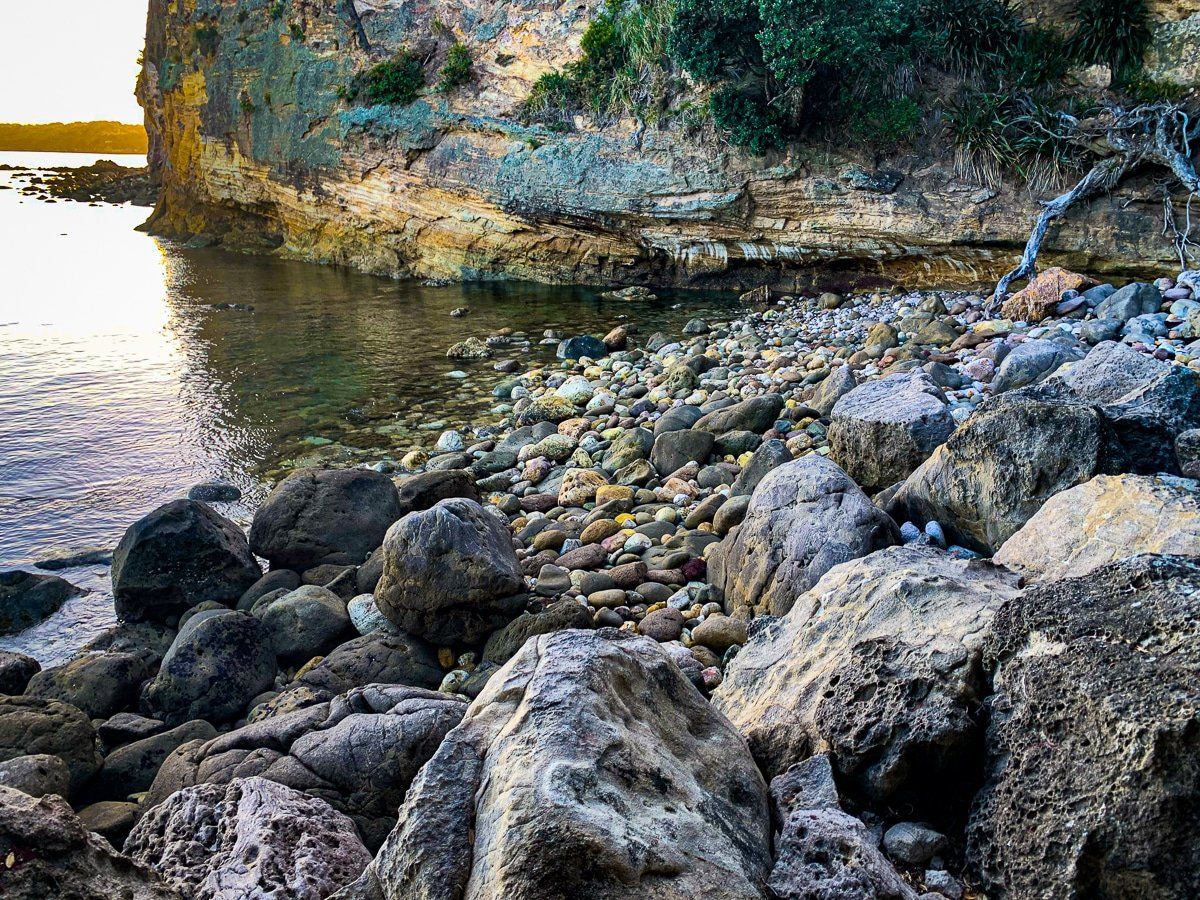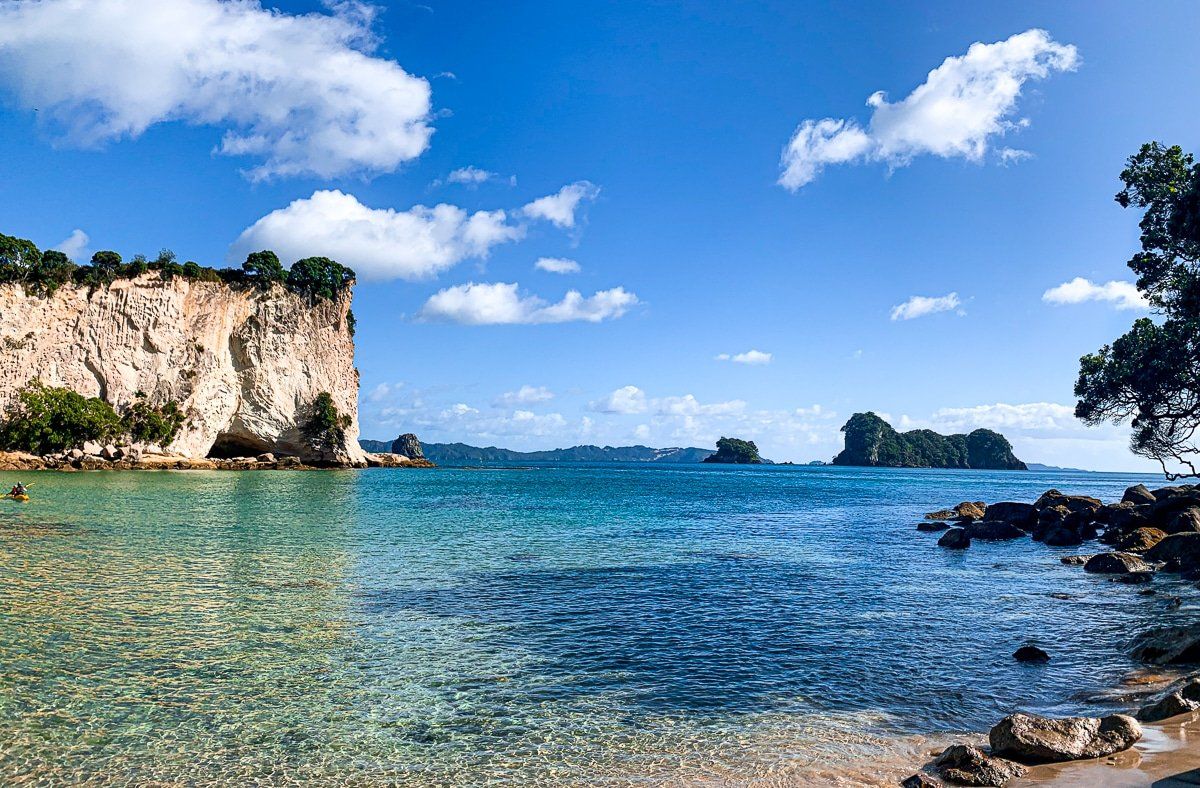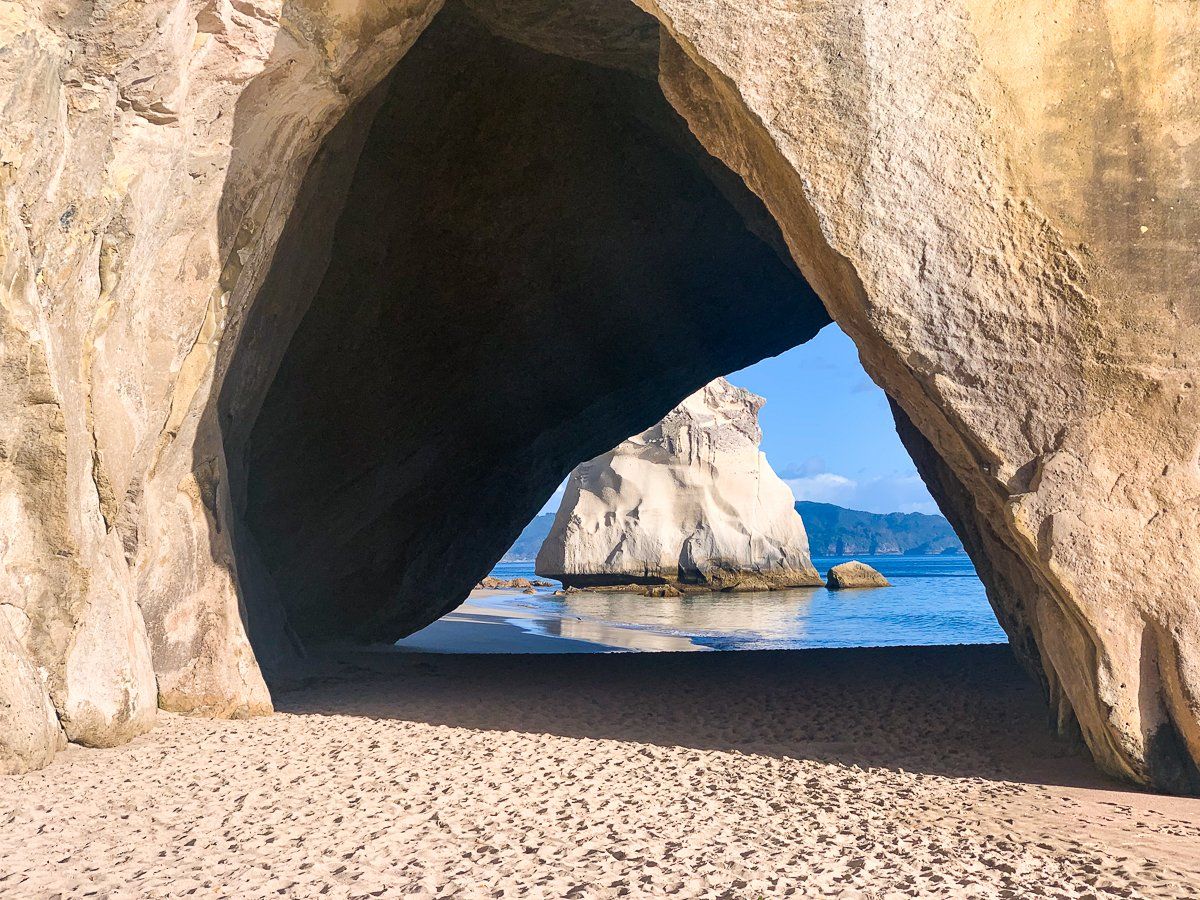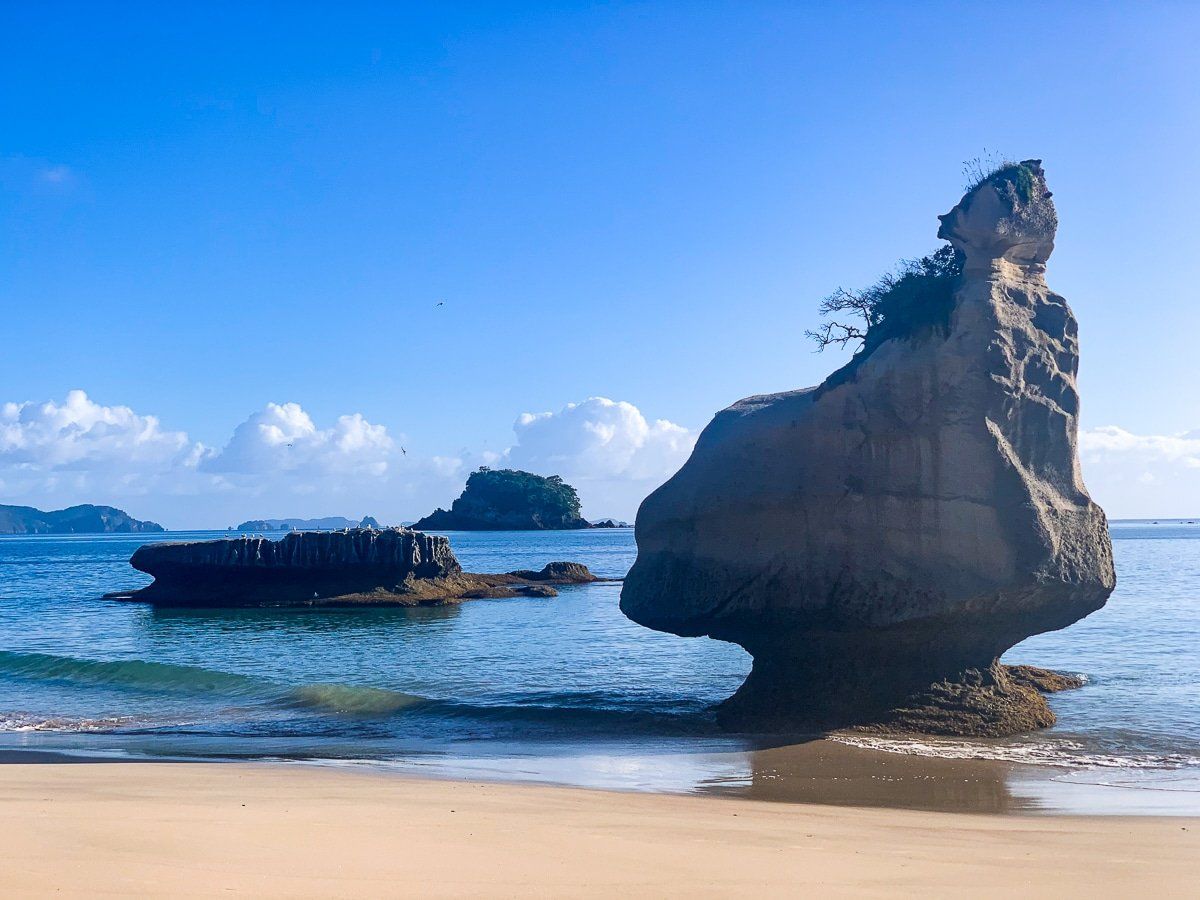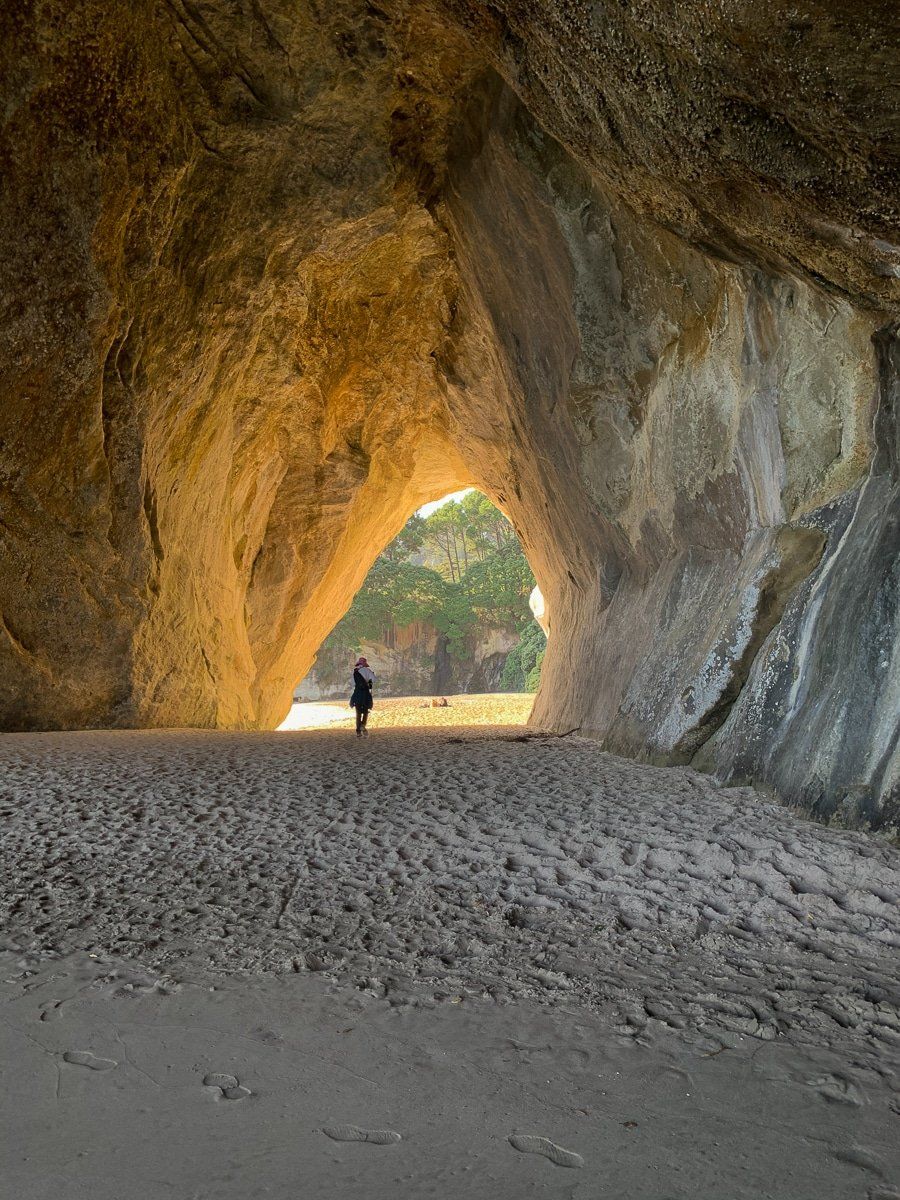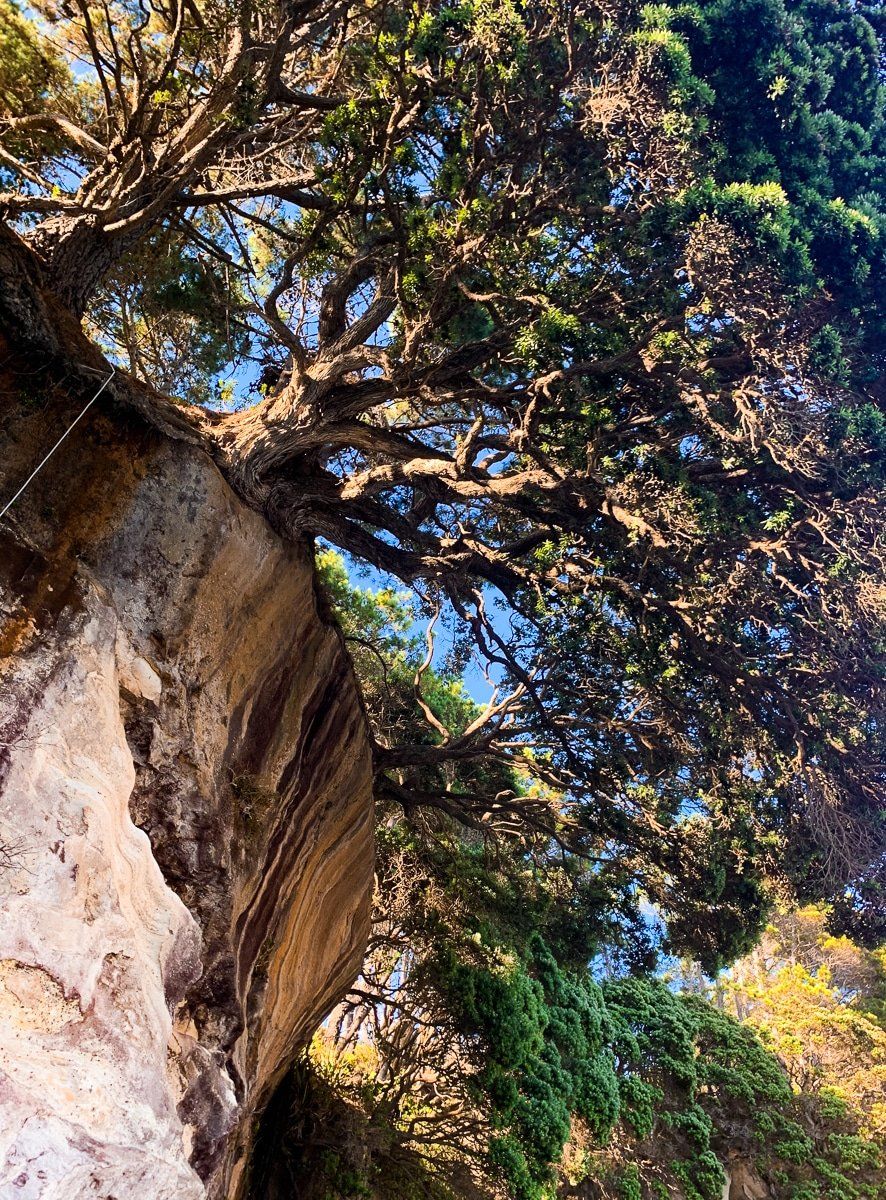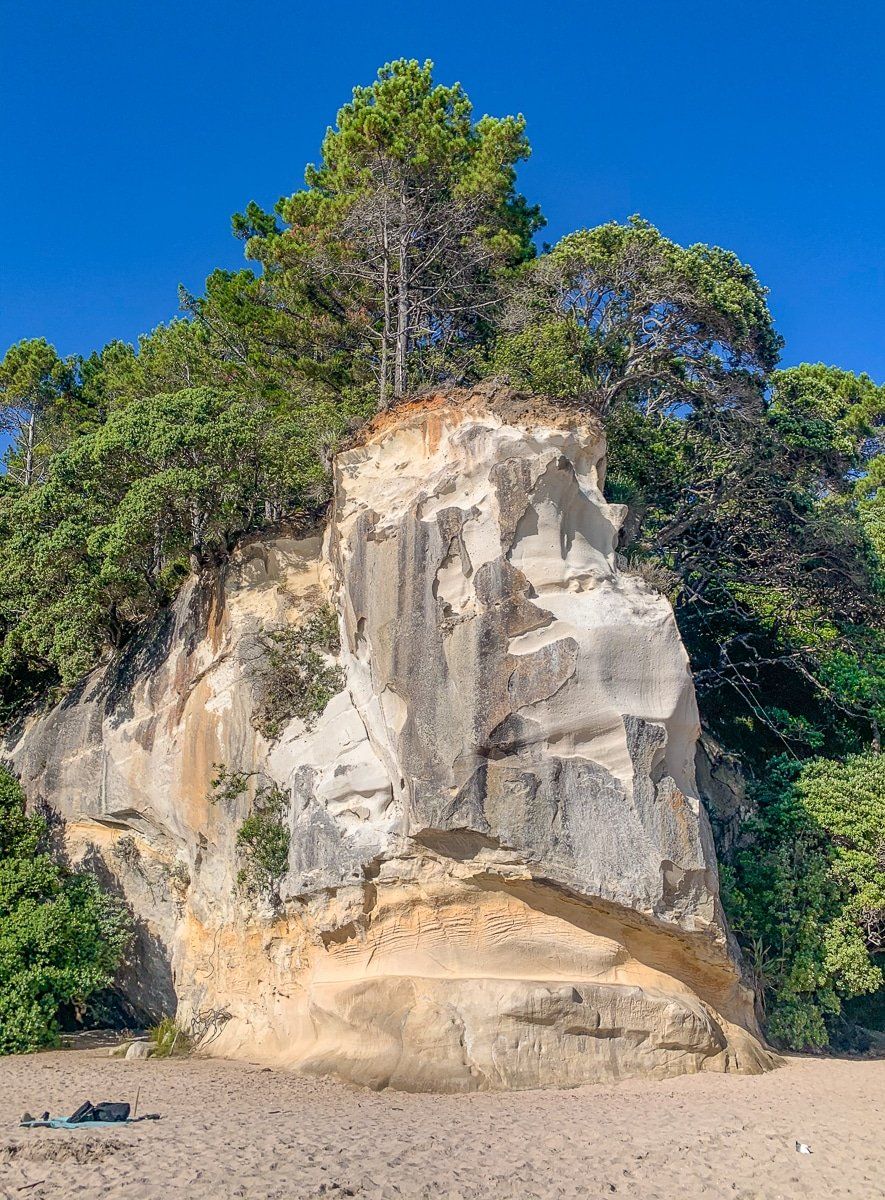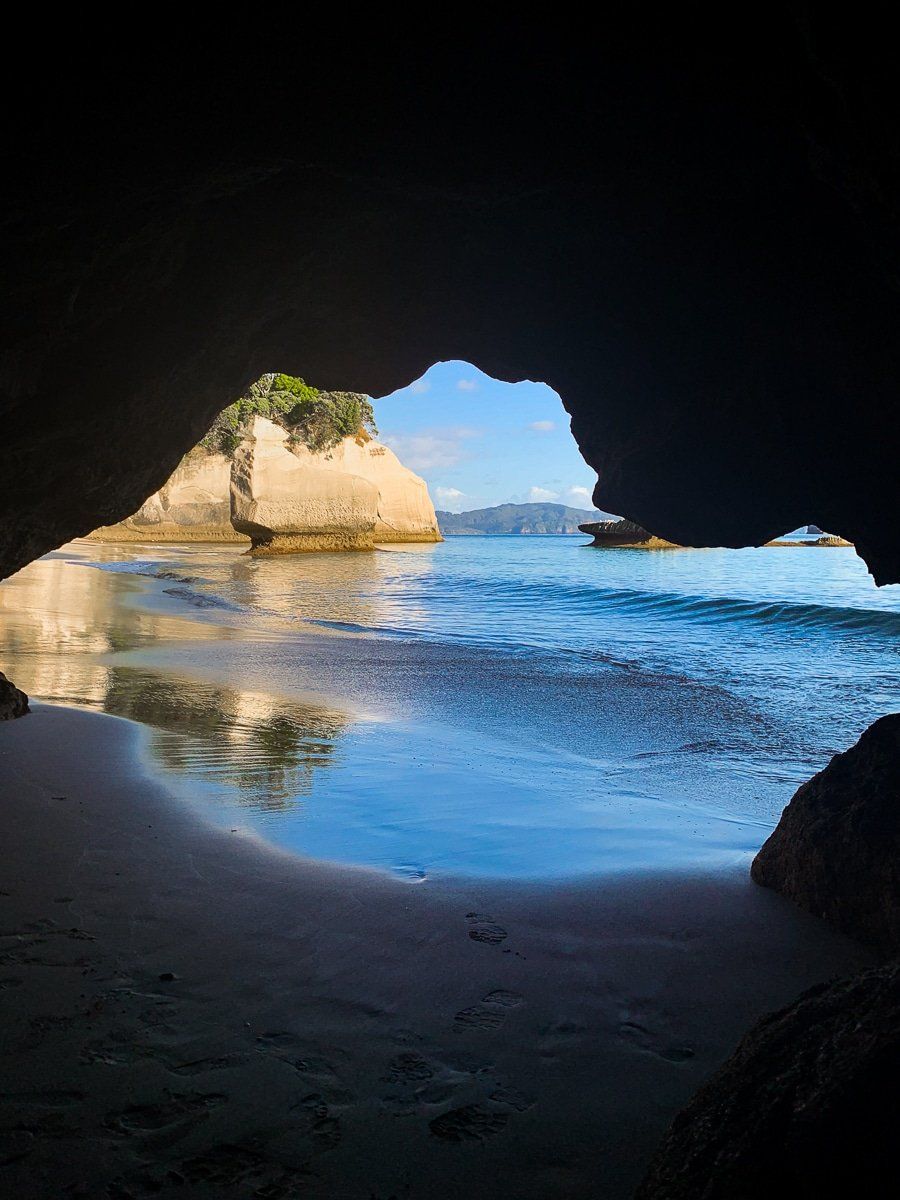The section of the eastern Coromandel between Hot Water Beach and Whitianga has gone from being relatively local backwater to a very popular tourist destination, with Cathedral Cove and Hot Water Beach as the primary attractions.
Both locations now have restrictions on parking but, especially now with travel restrictions, you can still enjoy a relatively quiet visit. In addition, there are several other great experiences in the area, including very safe Hahei Beach and the Te Pare Walkway. It is also only a short drive from these locations to several other cool destinations, such as Shakespeare Cliff, Lonely Bay and Ferry Landing (a passenger ferry to Whitianga).
Hot Water Beach
World famous Hotwater Beach is yet another example of a beautiful east coast Coromandel beach, but with the bonus of build your own natural hot pool at low tide.
Take a spade and where to dig is marked by a sign. This has become exceedingly popular, so try to avoid peak holiday and times of the day. Note that parking at Hot Water Beach is now metered as well.
If you don’t care for digging, there is still the beach, surfing, a lagoon walk, a couple of excellent cafes and a cool art gallery.
Hahei
Hahei is a bit bigger than Hot Water Beach, with several restaurants and cafes. It is also one of the safest beaches on the east coast as it’s well sheltered by offshore islands. If you want to take a boat tour around the coast, including a marine sanctuary, and islands, this is a good place to start.
There is plenty of commercial camping near the beach, plus other accommodation options. It is also the gateway for the walk to Cathedral Cove at the north end of the beach and a short walk to spectacular abandoned pa sites at the southern end.
Te Pare and Hereheretaura Point
This short walkway starts at the southern end of Pa Road and ends at Hereheretaura Point, with an optional side trip to Te Pare. This a wonderful walk, with fantastic views over Hahei and the islands to the east of the beach and evidence of abandoned Pa at both points.
The first part of the walk also includes a short walk amongst large old Pohutukawa trees.
Cathedral Cove walkway
This sealed walkway begins at the top of Grange Road at the north end of Hahei. You can no longer park anywhere on Grange Road, so either get a bus from the bottom of the hill, walk up the road, or take a connecting track from the north end of the beach.
It takes about 40 minutes to walk to Cathedral Cove from the top with a couple of quite steep ups and downs. Along the way there are two other small bays to visit and a short side track to a mature grove of puriri trees. All are worth exploring.
Also note that there is now an access track to about three quarters of the way along the main track from a parking area on Lees Road, with a turnoff just before Hahei. It’s less interesting than the walkway and takes just as long, but you can park there.
Stingray and Gemstone Bays
These two small bays are short walks from the main Cathedral Cove track. Gemstone Bay seems oddly named as it is largely filled with rather large stones and rocks, but it’s considered the best place for snorkelling and diving on this part of coast.
Stingray Bay is a more typical east coast beach, but unusual as it is almost entirely surrounded by white cliffs. It’s a good alternative to Cathedral Cove on excessively busy days.
Cathedral Cove
This is the place to visit, at least for many visitors to New Zealand. The white cliffs, large Pohutukawas trees, natural archway and cave, perfectly clear water, waterfall and stunning rock formations all make Cathedral Cove one of the most stunning beaches in the country.
Curiously, you actually arrive at Mares Leg Cove and you need to walk through the arch to get to Cathedral Cove.
The only downside? Everyone else thinks it’s cool to visit as well and the beaches are quite small. Avoid public holidays if you can!
Want more Coromandel trip ideas?
Check out our recent posts about Pauanui and Tairua, Whangamata, Onemana and Opoutere, and Waihi.




